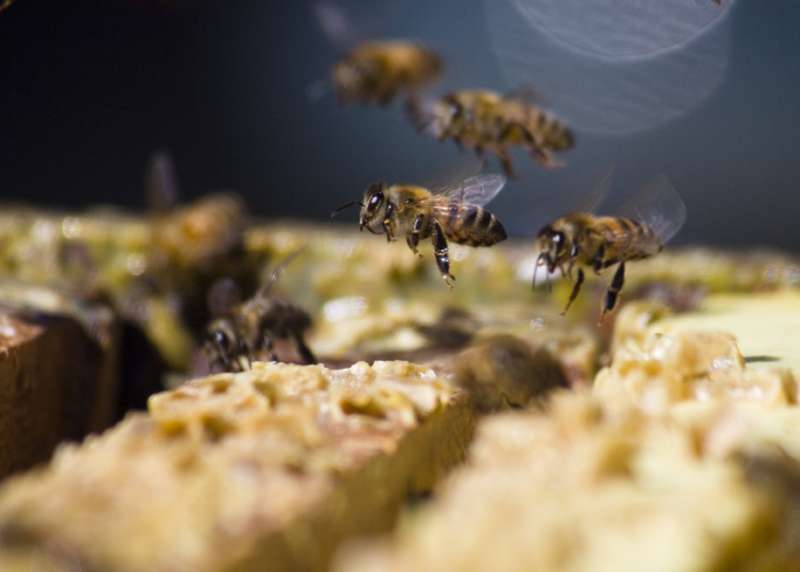Similarities found in bee and mammal social organization

New research shows similarities in the social organisation of bees and mammals, and provides insight into the genetics of social behavior for other animals. These findings, published in PLOS Computational Biology, use sociogenomics - a field that explores the relationship between social behaviour and the genome - to show strong similarities in socially genetic circuits common in honey bees and mammals.
The last common ancestor of the animals and insects is thought to be a legless creature that lived over 600 million years ago, for which we have no evidence of social behavior. Since then social insects such as honey bees and social mammals such as ourselves have pursued separate paths to our well-developed complex sociality. But a major unanswered question in understanding the genomic bases of social behavior is whether these separate paths towards sociality emerged from common molecular roots or drew upon different molecular substrates each time.
The authors note that, "When we began this study there were three possible outcomes: a) Our tools would not be adequate to determine whether sociality in honey bees and mammals shared a common genomic origin, b) we would discover there was no common genomic origin discernible from the data, or c) we would discover that there is a common origin. The answer turned out to be c), which is nice, because it is the most interesting answer."
To discover this, Hui Liu, Gene Robinson, and Eric Jakobsson of the University of Illinois developed new computational tools to analyze patterns of gene conservation across a wide range of animals, for genes activated and inhibited in the honey bee brain by exposure to a chemical communication signal that triggers alarm.
The study shows that these genes are more widely conserved between honey bees and mammals, compared to either honey bees and asocial insects, or honey bees and asocial vertebrates. Most of the genes with this provocative pattern of conservation are involved in activities related to cellular remodeling, such as protein folding. The authors hypothesize that these activities are components of cellular reconfigurations that are involved in processing communication signals essential for social organization.
This work shows the power of using the tools of computational genomics to analyze gene expression patterns for the purpose of elucidating the evolution of behavior.
More information: Liu H, Robinson GE, Jakobsson E (2016) Conservation in Mammals of Genes Associated with Aggression-Related Behavioral Phenotypes in Honey Bees. PLoS Comput Biol 12(6): e1004921.DOI: 10.1371/journal.pcbi.1004921
Journal information: PLoS Computational Biology
Provided by Public Library of Science



















